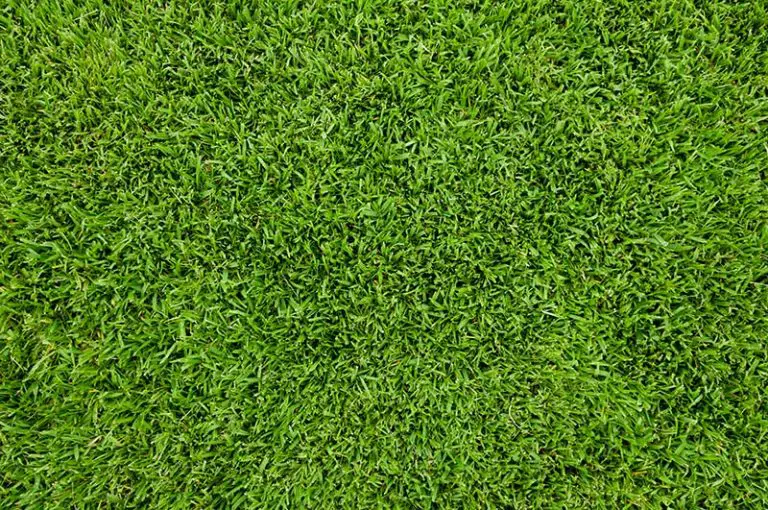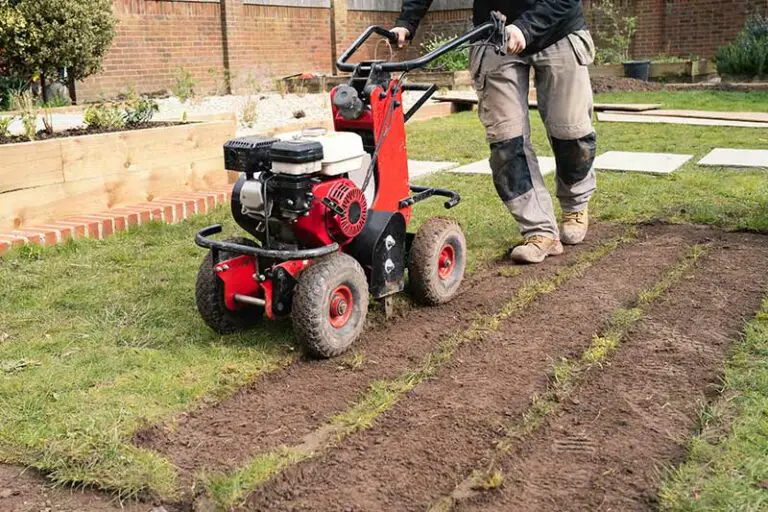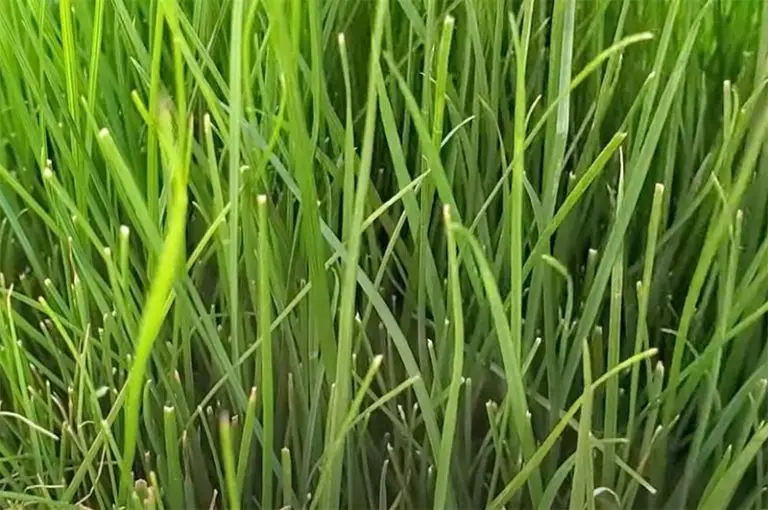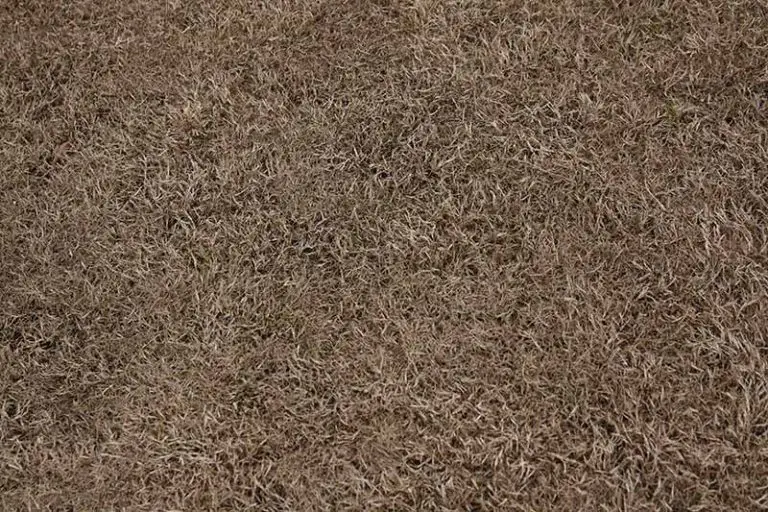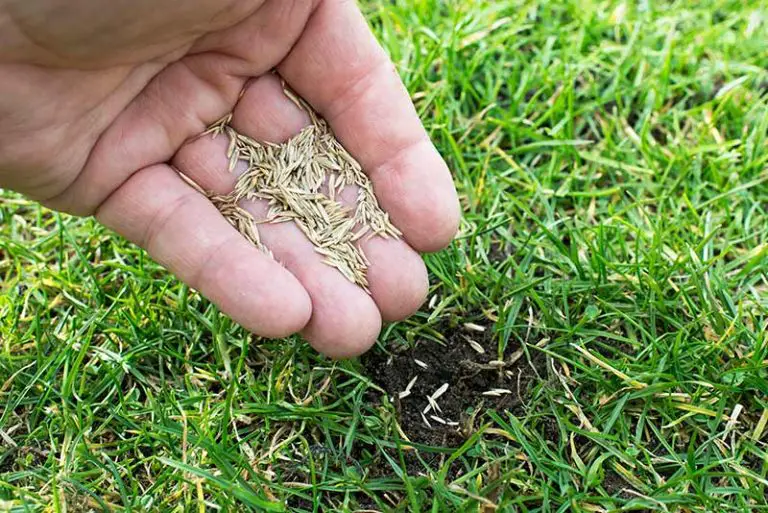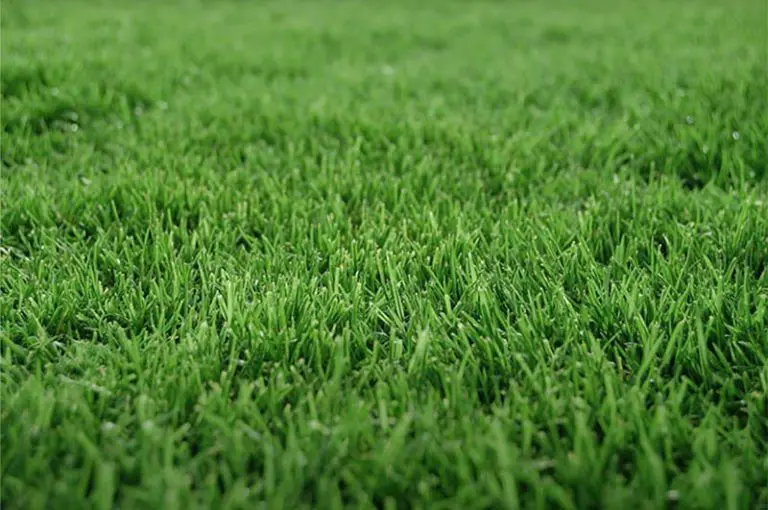Why Isn’t My Grass Growing? Common Causes and Solutions
There are a host of different reasons why your grass may not be growing. The most common reasons for slow or non-existent grass growth are grass dormancy, improper watering, a lack of sunlight, an incorrect soil pH, or a lack of nutrients in the soil. Other reasons that could impede grass growth include soil compaction, buried obstructions, fungal disease, and pest infestations.
What Does Grass Need to Grow?
Before we delve into the reasons why your grass may not be growing, you should understand what it needs in the first place. The five vital elements grass needs to grow are suitable temperatures, sufficient watering, sunlight, the correct soil pH, and enough nutrients. Your grass will struggle to grow if your soil fails to meet any of these requirements.
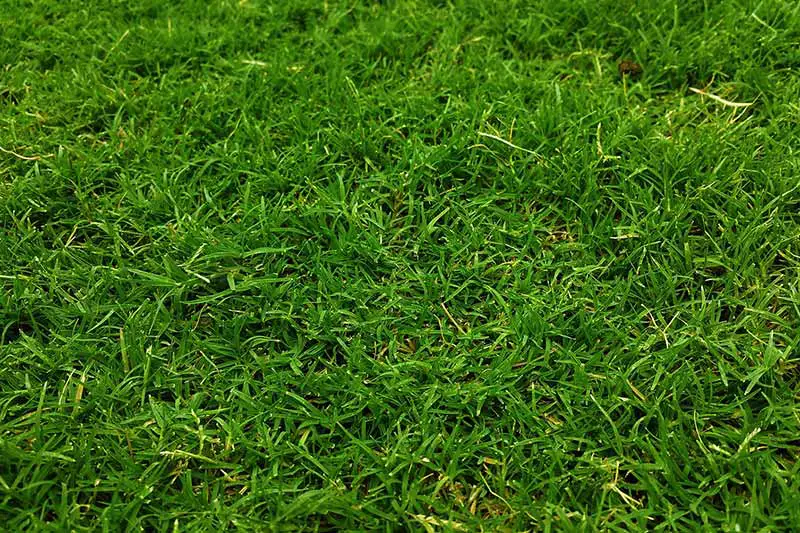
Suitable Air and Soil Temperatures for its Species
Grass only grows under certain weather conditions, and preferred conditions vary between different species. Air and soil temperatures in your area must fall within the preferred range for your grass seed or mature grass to actively grow.
Based on their growing seasons, grass species are divided into two groups, being either cool-season grasses or warm-season grasses. Cool-season grasses thrive in midler temperatures between 60°F and 75°F; this range corresponds with the typical temperatures in spring and fall in the northern states of the US. Warm-season grasses instead prefer warmer temperatures of 70° to 95°F; they therefore grow most actively from late spring throughout summer in the warmer southern states.
Grass will only grow as long as the weather conditions in your area support these temperatures. Outside of its active growth period, your grass will stop growing completely. During this time, your grass may even turn brown and appear dead. This is simply a state of dormancy causing the blades to die off while the roots and crown remain alive. The grass can remain in this state for several weeks without dying, continuing to grow once conditions return to normal.
Sufficient Water in Soil
Proper watering is another crucial element that grass needs to grow. Depending on its stage of growth, you must provide your grass with enough water through proper irrigation practices. Adding too much water, watering too often or too infrequently, or watering at the wrong time are all common mistakes.
Your irrigation activities will primarily depend on whether you’re watering new grass or a mature lawn; a newly seeded lawn has very different watering requirements than a lawn full of mature grass. When watering grass, aside from keeping it hydrated, the goal is to encourage the healthy development of the grass’ roots. This is the main factor that will influence how often you water your lawn to support its optimal growth.
As new grass seed lacks any roots, it requires frequent watering to a shallow depth. You will need to water newly sown seed 2 to 3 times per day to a depth of 2 inches; you must keep up with this schedule daily until the grass sprouts. Grass seed can go without water for no longer than 12 to 24 hours; therefore, if you miss a day of watering, the seedlings will quickly dry out and die with no chance of recovery. Oppositely, it’s possible to overwater grass seed too. Adding more water than is necessary can prevent grass seed germination by drowning the seed or washing it away entirely.
Mature grass, on the other hand, thrives under less frequent, deeper watering sessions. Watering deeply and infrequently encourages the grass to grow deeper roots as it must reach further into the soil to access the water. You should only water mature grass 1 to 2 times per week, adding 1 to 1.5 inches of water in total.
Access to Sunlight
In addition to water, sunlight is another vital element that both grass seed and mature grass needs to grow. In essence, grass plants use sunlight to feed themselves; sunlight drives photosynthesis, the process that plants use to create the energy that fuels their cell reproduction. Without enough sunlight, grass plants will stop growing as they essentially starve to death.
The requirements for direct sunlight vary between grass species. Some grasses, like Kentucky bluegrass, Bermuda grass, and buffalo grass, require full sunlight, and will struggle to grow in shaded areas. Grass types such as St. Augustine grass, zoysia grass, and fescue grasses will instead be much more tolerant to partial shade. With that said, even the most shade-tolerant grass types will require at least some sunlight each day; there are no grass types that will be able to grow in full shade.
Correct Soil pH for Grass Growing
For grass to grow properly, you must also have the correct pH in your soil. Soil pH is the scientific measurement of how acidic or alkaline your soil is. If your soil falls out of the grass’ preferred pH range, the growth of your lawn will slow or stop entirely.
The best soil pH for grass growing is a level within the range of 6.5 to 7.0. A pH level below 6.5 indicates overly acidic soil, whereas a pH higher than 7.0 means the soil is overly alkaline. When the pH is incorrect, it affects the availability of nutrients in the soil to the grass plants. The grass will become malnourished as it won’t be able to absorb the nutrients that it needs to grow.
The natural pH of your soil primarily depends on the original material from which the soil was formed. For instance, soils heavy in clay tend to be naturally alkaline, while sandy soils are more prone to acidity. Several other conditions can influence soil pH, including nitrogen levels, shade, and humidity in the lawn. Adjusting soil pH involves adding an acidifying material like sulfur, or alkaline material such as agricultural lime, to get the soil back in the desired range.
Readily Available Nutrients in Soil
Grass also needs a range of nutrients readily available in the soil in order to grow. The three primary nutrients that grass and all plants require are nitrogen (N), phosphorus (P), and potassium (K). In addition to these primary nutrients, grass also requires a number of micronutrients in lesser quantities, including iron, calcium, and magnesium.
All of the different nutrients are necessary to perform different functions within the grass plants. Nitrogen (N) is the nutrient that gives grass its green color, playing a key role in the production of chlorophyll; it drives the growth of the grass by enabling the process of photosynthesis. Phosphorus (P) drives the grass plants’ root growth and strengthens them against disease. Potassium (K) generally supports the functions within the grass plants, both sustaining their growth and improving disease resistance.
Although these nutrients occur naturally in soil, their presence can deplete over time. This is why fertilization is such a key aspect of your regular lawn maintenance routine; by adding a suitable fertilizer, you can replenish any missing nutrients, thus improving your soil’s fertility. Take note that pH can affect the availability of nutrients in the soil. In other words, even if the nutrients are present, they won’t be available to your grass plants if the soil pH is incorrect.
Why is My Grass Not Growing?
All of the factors we’ve just discussed are the most obvious reasons why your grass may not be growing. However, sometimes you can meet all of the essential requirements listed above and yet your grass still won’t grow. Alternative reasons why your grass isn’t growing include soil compaction, buried obstructions, restricted air circulation, fungal disease, and pest infestations.
Soil Compaction
Your grass won’t grow in compacted soil. Soil compaction occurs when the soil particles become compressed too closely together, pushing out spaces in the turf. Without these spaces, essential elements like air, water, and nutrients are unable to circulate the soil around the grass’ roots. Compact soil further stunts the growth of grass by preventing them from growing deep, extensive root systems.
Several conditions can cause soil compaction to develop. This issue is primarily caused by the amount of foot traffic that your lawn receives; daily usage people, pets, and vehicles will gradually compress the soil, causing compaction to worsen over time. Another major factor is your soil type, as some soils are naturally more prone to compaction than others. For example, clay-heavy soils are very susceptible to becoming compacted, while sandy soils are naturally well aerated. Changing weather conditions can also exacerbate soil compaction.
Objects Buried Under Soil
If your grass won’t grow in certain areas, this could indicate a different issue lying below the soil surface. Objects buried beneath the soil can impede the growth of your grass’ roots; in turn, this prevents the blades of the grass above the buried obstructions from growing.
The easiest way to identify buried obstructions without tearing up the turf is to use a soil probe. Upon pushing the probe into the areas of struggling grass, you may be able to feel resistance from the obstruction; this could be a bed of stone, a layer of dense clay, or even construction debris buried in the soil.
Lawn is Suffering from Fungal Disease
Fungal lawn disease is another common issue that can stunt the growth of your grass. Disease-causing fungal spores can invade your lawn, leading to full infestations of a range of fungal lawn diseases. Some examples include brown patch, summer patch, dollar spot, red thread, and pythium blight. These diseases manifest as patches of yellow or brown grass that will fail to grow while the disease is present.
Disease-causing fungal spores will multiply and spread most rapidly when conditions are warm and wet. This is why you can inadvertently encourage fungal growth by overwatering your lawn or watering too late in the day. Other factors that increase the likelihood of fungal disease are poor air circulation and having an uneven lawn.
Lawn Has a Pest Infestation
Grass that won’t grow could also indicate a pest infestation in your lawn. Pests like grubs and chinch bugs feed on grass roots, destroying them in the process. These pests’ feeding habits will initially slow the growth of the grass; they will turn the grass yellow or brown in patches before killing the plants entirely.
Your lawn will be more susceptible to pests if the grass is already in poor health; struggling grass is generally more vulnerable to stressors like pest infestations. You’re also more likely to see pest infestations if you overwater the grass or neglect to dethatch the lawn when necessary.
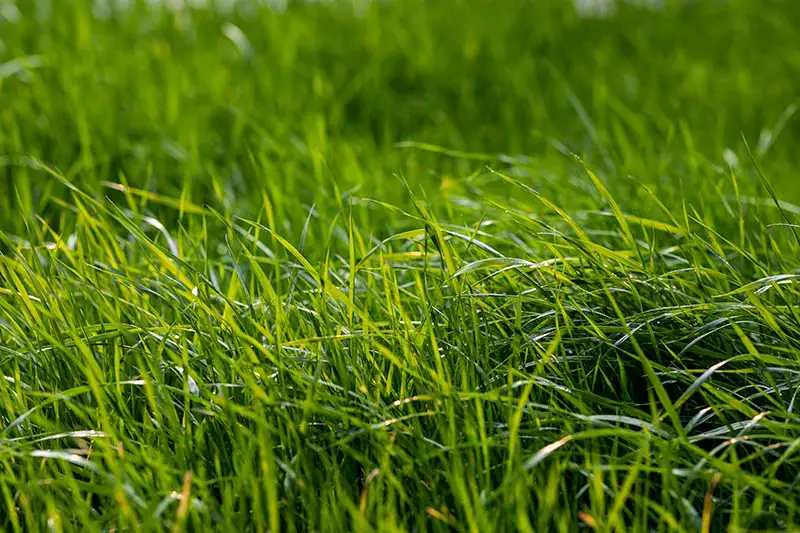
What to Do if Your Grass Won’t Grow
1. Test Soil
Conducting a soil test is the first step towards improving the growth of your grass. The results of the test will show you the current nutrient content and pH level of the soil; from these results, you can determine which amendments your lawn may need to get into optimal growing condition. You can either test the soil yourself using an at-home kit, or send a sample off for professional testing.
2. Dethatch and Aerate Lawn
Dethatching and aerating are two highly beneficial lawn care activities you should incorporate into your routine. Both of these activities are vital for both improving grass growth and enhancing the effectiveness of subsequent lawn treatments. Dethatching is the process of reducing the thatch layer, while aerating involves breaking up soil compaction. For best results, you should dethatch before aerating if carrying out both processes.
3. Adjust Soil pH if Necessary
If your soil test reveals that the soil pH is incorrect for grass growing, you’ll need to adjust it with a pH-altering substance. As a reminder, the ideal pH for grass is between 6.5 and 7.0. Add agricultural lime to make your soil more alkaline if its pH falls below this range; if the pH falls above this range, instead add sulfur to acidify the soil.
4. Add Lawn Fertilizer
A boost of nutrients via a high quality fertilizer may be all your grass needs to get growing. You should add a fertilizer to your lawn, choosing a product based on the results of your soil test; the best lawn fertilizer will be one with a suitable NPK ratio to meet the specific nutritional needs of your lawn.
5. Reduce Shade in Yard
If your grass is struggling to grow in shaded parts of the lawn, your best option is to reduce the shade if possible. Trim back large trees and bushes and remove any other shadow-casting objects to allow sunlight through. You should also consider reseeding or overseeding your lawn with a more shade-tolerant grass variety if this is an issue.
6. Treat Fungal Disease
If you identify that your lawn is suffering from a fungal disease, you should treat the grass with an appropriate fungicide.
7. Treat Pests
Take a look in your lawn for evidence of pest activity. If you determine there is an infestation, you’ll need to treat the grass with a pesticide suitable for the pest you’re dealing with.

